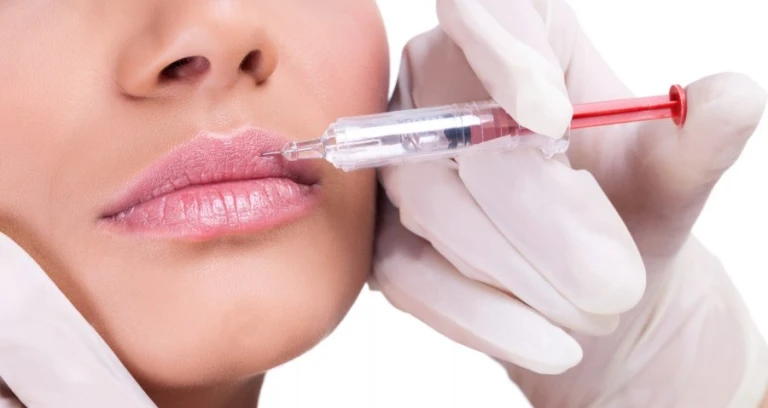- HOME
- Filling
Although we evaluate the person in front of us as a whole, the first area that catches our attention when we start communicating is the face. Scientific studies have shown that the perception of a face as beautiful or ugly is largely independent of culture. The human brain perceives and records whether a face is beautiful or not very quickly. In general, all women pay a lot of attention to their faces with this awareness.
The need for the face to look young, fresh, bright and fit has led to the formation of companies that produce creams, lotions and peeling products related to the face. However, tissue losses due to melting and thinning of the skin and subcutaneous fat tissue during facial aging could not be prevented with these creams. Fillers were produced to restore the volume and fullness lost due to aging or trauma, to reduce wrinkles and to moisturize the skin from the inside. The fact that they can be done without surgery, are easy to apply, get results immediately and have few side effects has increased the prevalence of these applications and thanks to the R&D studies conducted in this field, more reliable products have come into use.
The most popular of the fillers, which are divided into three categories: temporary, semi-permanent and permanent, are hyaluronic acid fillers, which are temporary in effect, because the possibility of side effects is higher in permanent fillers. These fillers, which are generally in gel form and fluid, are used by injection and cannot be withdrawn from the area where they are injected.
Hyaluronic acid is a natural molecule that is already found in our body in quite high amounts and can be obtained from bacteria technologically. Therefore, the probability of causing an allergic reaction is lower than those of animal origin. It has no carcinogenic effect. Although it is mainly used on the face, fillers can also be used in other parts of the body.

Since the skin and subcutaneous tissue thickness is not the same in every part of the body, companies develop and produce products with different molecular sizes and cross-linking ratios to be injected into different body parts. The place where these products will be used and the depth at which the injection will be made are naturally different from each other. While less cross-linked, more fluid fillers are used for the under-eye area with a thin skin texture, products with high cross-linking ratios and large molecular weights are used to add volume to the chin or cheek area.
Since hyaluronic acid is a molecule with water retention properties, it adds volume to the area where it is injected in the body and can be applied practically in polyclinic conditions. As mentioned before, there are different products to be applied to different areas and only an expert can know which of these products will be used in which area and different products can be applied to different parts of the body in the same session.
The areas where filler application is made are the grooves from the corners of the nose to the corners of the mouth, lips, under the eyes, between the eyebrows, cheeks, chin, neck, hands and other areas of the body where tissue loss occurs. Sometimes, if the bridge of the nose is too curved or sunken due to nose surgery or trauma, filler application can also be made to give height to the bridge of the nose. Mild asymmetries on the face, whether congenital or acquired, can also be corrected with filler injections. The filler procedure can be applied to anyone, male or female, who has completed puberty (taking into account additional health problems).
Its effect lasts 8-12 months depending on the area applied, the brand and type of product and the differences in the personal characteristics of the person it is applied to. During this time, it is broken down and destroyed in the body without harming the body. If the person who receives the filler does not like the result obtained, there is no return in permanent fillers and getting rid of these substances may require some difficult surgical interventions. The advantage of dissolvable fillers is that there are some substances that will dissolve them and if you are patient, they will dissolve themselves anyway.
Before starting the application, local anesthesia can be applied with anesthetic creams or needles, and some branded products also have painkillers in their own syringes. The application time is about 10-20 minutes.
Redness, swelling and bruising may occur after the filling is applied, depending on the sensitivity of the area where it is applied. Side effects that may occur in filling procedures are pain, swelling and color change at the injection site. Granuloma and abscess may occur very rarely. Although animal or silicone-based fillers are more permanent, they also have a higher risk of allergic reactions, cysts and granulomas. People who use aspirin should stop taking aspirin 1 week before the filling application and should not use it for another 2-3 days after the application, otherwise intense bruising may occur in the application areas.
Applying ice after the filler injection prevents or reduces bruising. Since hyaluronic acid acts by retaining water, it is recommended to drink plenty of water for the first few days.
Recently, bioexpander has become popular in skin rejuvenation and wrinkle treatment. Bioexpander is also a type of hyaluronic acid. Since it is very thin, this filler is used safely, especially around the eyes, like light filler. Since it contains pure hyaluronic acid, it also increases the vitality of the area where it is applied.

